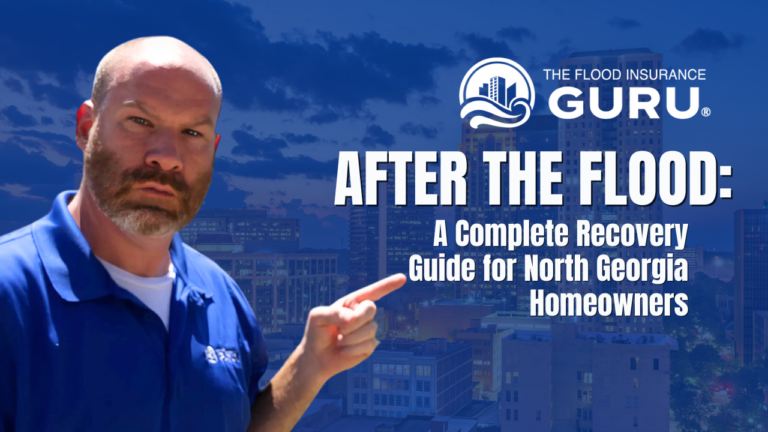Admitted Flood Insurance Policies: What Real Estate Investors Need to Know
Are your investment properties really protected against flood damage?
Do you know the critical differences between admitted and non-admitted flood insurance—and how that could save (or cost) you thousands?
This article will give you everything you need to confidently navigate flood insurance options as a real estate investor. You’ll learn what admitted flood insurance is, why it matters, and how it compares to non-admitted policies. We’ll also break down the practical implications for your portfolio—so you can make smarter, more secure decisions.
In this article, you’ll discover:
- How the flood insurance market works and why it’s changed
- The key benefits of admitted flood insurance policies
- How admitted and non-admitted flood policies compare
- Misconceptions that put your investments at risk
- How to build a flood insurance strategy for long-term success
The Flood Insurance Landscape: What’s Changed and Why It Matters
The U.S. flood insurance market has shifted dramatically. Once dominated by the National Flood Insurance Program (NFIP), the space now includes growing private options. That’s a good thing for real estate investors—more choices, better pricing—but also introduces complexity and risk.
Most critically, standard landlord insurance excludes flood damage entirely, meaning a separate policy is required. With flood risks rising due to climate change, real estate investors can’t afford to treat flood insurance as an afterthought
What Is Admitted Flood Insurance?
Admitted flood insurance is coverage offered by insurers licensed by a state’s Department of Insurance. These insurers:
- Must meet strict regulatory and financial stability standards
- Are subject to state oversight
- Participate in state guaranty funds (a safety net for policyholders if the insurer fails)
This is not the case with non-admitted or surplus lines insurers, which operate outside state licensing systems. Non-admitted carriers can offer flexibility—but lack the regulatory safety nets that protect you in worst-case scenarios.
The 3 Key Advantages of Admitted Policies for Investors
1. Lower Fees and Cost Efficiency
Admitted policies aren’t subject to surplus lines taxes and fees, which can range from 2% to 6% of your total premium. For large portfolios, this can mean savings of thousands annually. No stamping fees. No extra admin charges. Just lower total costs.
2. State Guaranty Fund Protection
If an admitted insurer goes bankrupt, the state guaranty fund steps in. In a catastrophe, that can mean the difference between a full insurance payout and financial disaster. Non-admitted carriers offer no such protection.
3. Robust Consumer Protections
Admitted insurers are heavily regulated. That means:
- Approved policy language
- Fair claims handling standards
- Financial audits and solvency oversight
- State complaint resolution processes
Non-admitted policies don’t provide these guardrails, increasing the risk for investors—especially during complex or high-value claims
Admitted vs. Non-Admitted Flood Insurance: Which Is Right for You?
Admitted Policies
- Lower costs due to fewer taxes/fees
- Protected by state guaranty funds
- Transparent regulation and recourse options
Non-Admitted Policies
- No state financial backstop
- Higher costs (taxes + admin fees)
- Flexibility for higher-risk or unusual properties
Sometimes non-admitted is the only option (e.g., past flood damage, unique builds), but admitted coverage is the safer, more stable choice whenever available.
Flood Insurance for Real Estate Investors: Unique Challenges
Actual Cash Value (ACV) vs. Replacement Cost
Investment properties usually get ACV coverage—meaning depreciation is deducted from claim payouts. This can lead to significant out-of-pocket costs.
Limited contents and detached structure coverage
You may need separate or supplemental policies to fully protect garages, sheds, or high-value interior elements.
30-day waiting periods
Flood policies don’t kick in immediately. Plan ahead—especially during acquisition or storm season
Understanding Flood Zones: The Fine Print That Affects Your Premium
- Zones AE, VE, and other Special Flood Hazard Areas (SFHAs): Mandatory flood insurance if you have a federally-backed mortgage.
- Zone X: Lower risk, but not no risk—40% of NFIP claims come from these “low-risk” zones.
- Zone maps change: FEMA updates flood maps regularly. Properties can move into higher-risk zones unexpectedly.
Pricing Factors You Can’t Ignore
- Location: The closer to water, the higher the cost.
- Elevation: Properties built above base flood elevation pay less.
- Construction type and age: Older properties usually pay more.
- Coverage amounts and deductibles: Higher limits and lower deductibles mean higher premiums.
Private carriers may offer higher limits and better terms—especially if you’re insuring beyond NFIP caps ($250K for buildings).
Top Misconceptions That Hurt Investors
- “Only high-risk areas need flood insurance.”
- False. Floods happen everywhere. Many claims come from low-risk zones.
- “My landlord insurance covers floods.”
- It doesn’t. Flooding is always excluded.
- “NFIP is my only option.”
- Not anymore. Private insurers (including admitted ones) now offer competitive alternatives.
- “I can buy coverage right before a storm.”
- Wrong. Most policies have a 30-day wait. Timing matters.
Pro Tips for Real Estate Investors
1. Evaluate Flood Risk Like a Pro
Use FEMA maps, but also check local history, elevation, drainage, and neighborhood infrastructure.
2. Work With Flood-Savvy Insurance Agents
Not all brokers understand the intricacies of flood coverage. Choose one who specializes in investment property risks.
3. Think Portfolio-Wide
Don’t treat properties in isolation. Use deductibles, policy bundling, and self-insurance strategies to manage cost across your portfolio.
4. Stay Informed
Regulations and offerings change. Review your flood coverage annually—especially if new admitted options become available in your state.
Final Take: Should You Choose Admitted Coverage?
If it’s available, admitted flood insurance is usually the smarter play for real estate investors. It offers more transparency, more protection, and often lower costs. It’s especially valuable for:
- Multi-property investors
- High-risk flood zones
- Anyone who values claim certainty and peace of mind
But don’t ignore non-admitted options—especially when admitted coverage isn’t accessible or doesn’t meet your needs. Just make sure you understand the risks and trade-offs.
At the end of the day, protecting your properties from flood damage isn’t optional—it’s essential. And knowing whether to choose admitted or non-admitted coverage can make or break your financial recovery when disaster strikes.
Now that you know the difference, your next step is to speak with a flood insurance expert who can review your portfolio and help you make the best coverage choices for your situation.

At the end of the day, protecting your properties from flood damage isn’t optional—it’s essential. And knowing whether to choose admitted or non-admitted coverage can make or break your financial recovery when disaster strikes.
Now that you know the difference, your next step is to speak with a flood insurance expert who can review your portfolio and help you make the best coverage choices for your situation.
At the end of the day, protecting your properties from flood damage isn’t optional—it’s essential. And knowing whether to choose admitted or non-admitted coverage can make or break your financial recovery when disaster strikes.
Now that you know the difference, your next step is to speak with a flood insurance expert who can review your portfolio and help you make the best coverage choices for your situation.
But don’t ignore non-admitted options—especially when admitted coverage isn’t accessible or doesn’t meet your needs. Just make sure you understand the risks and trade-offs.
At the end of the day, protecting your properties from flood damage isn’t optional—it’s essential. And knowing whether to choose admitted or non-admitted coverage can make or break your financial recovery when disaster strikes.
Now that you know the difference, your next step is to speak with a flood insurance expert who can review your portfolio and help you make the best coverage choices for your situation.
Information contained on this page is provided by an independent third-party content provider. This website make no warranties or representations in connection therewith. If you are affiliated with this page and would like it removed please contact editor @producerpress.com







